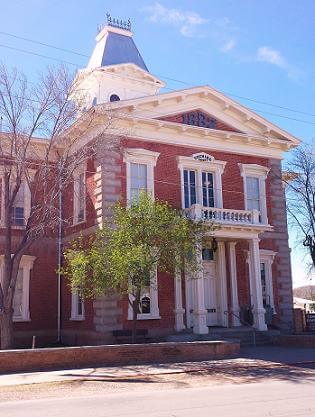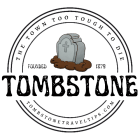The 1880s were a time of great change. The Industrial Revolution was speeding along with all its technological wonders!
Can you imagine? Before this time, people were used to only living their evening hours by candle-light or oil lamps. Including students doing their evening studies! That encouraged early bedtimes for sure!
The Latest Inventions
But now – the electric light was on its way! Thomas Edison was establishing his electric power plants. Cities could soon provide lighting to streets and homes. What other amazing things were happening?2
- A few simple home appliances that really gave some added advancements to daily life – the electric fan (home comfort!) and electric iron (personal grooming). We very much take them for granted today, don’t we?!!
- The Statue of Liberty was built and presented
- Arc welding machine’s invention improved products
- Dry cell batteries were invented
- A new practical use metal was invented, it was called aluminum
- In medicine, the first method for recording the heart’s electrical rhythm was invented: electrocardiography – very helpful for heart disease patients’ diagnosis and analysis. For the first time physicians could actually demonstrate a record of what had happened to the heart! And then went on to what was happening in real time – even better!
- Sky-scrapers, the steel-framed large buildings were going up in cities
- The first motorized cars came on the scene, what an advancement for transportation
- Thomas Edison produced the first moving picture
- So Western Movies were soon available for entertainment!

- The railroad enabled cross-continental travel in the US, which gave rise to establishment of five U.S. and Canadian time zones
- The fire hose began replacing the need for a leather bucket used in bucket brigades, starting an era of improvement in firefighting7
- Much in need for many Devastating Fires suffered in cities and towns in the 1880s
- A precursor to the World Series – the first post-season baseball games were played
- Labor activists were influential in starting a General Strike throughout the US to obtain the 8-hour work-day
- And (thankfully!), the flush toilet came into much more widespread use – particularly in homes with modern upgrades of the day!
- Even though the actual flush toilet was invented way back in 1596!6

In Historical Tombstone Arizona, some of these events affected life more than others in the 1880s.
When we walk around town and look at the historic buildings, we think about that! What were the specifics of the 19th century in the Wild West, in Tombstone and in Arizona?
Native Americans
In the 1880s Native Americans inhabited areas surrounding Tombstone AZ.
Original Native Peoples resided in what’s currently Cochise and Santa Cruz Counties and up into Pima County. They were the Sobaipuri, residents before the invading Europeans arrived. Sometimes they’re referred to with the Tohono O’odham (Papago) name Rsársavinâ which essentially means “spotted.” Mostly found living in the San Pedro River Valley up to the river’s source in the Huachuca Mountains. They ranged as far West as the Santa Cruz River, and in Southeastern Arizona possibly to the New Mexico border.3

The Apaches were nomadic, and had intermittent base encampments in the area. There were several bands which populated Southeastern Arizona.
As a raiding peoples, they likely forced the Sobaipuri further Westward. This aggregated them along the Santa Cruz River, intermingling with other O’odham bands.3 The Tohono O’odham were also Known as Papago, which means “bean people.” Another band of O’odham are the Akimel O’odham, also referred to as the Pima Indians.4
1880s West Migration
In the 1800s people were motivated to move West to begin new lives. After the Louisiana Purchase in the early part of the century, the government’s plan for Western migration encouraged them. The principle of Manifest Destiny, influenced by religious beliefs also promoted this Westward movement.5
Economic interests for land use motivated others. Homestead Acts offered land to be worked and improved. Many families came West to take advantage of that. People tended to settle in areas where land was offered, where other family members had already settled, and where frontier towns provided opportunity. Many of these migrants were Immigrants from outside the borders of the United States of the time, and its territories. As they came West, they usually stayed with their known cultural groups, going to areas where they congregated. That was either by choice, or by need of the circumstances.
Their major mode of transportation was by horseback, Conestoga Wagon (Prairie Schooner) and in Stagecoaches. But the railroad was changing the ability for people to travel the country. To be able to move around a little easier. The first Transcontinental Railway was completed in May 1869.1

These early towns were usually built around mining, railroads, protective army forts or water access. Initially they lacked typical organizational amenities such as a government with law enforcement or banking. Inns were available, but typically established in large canvas tent buildings. Quickly lawless elements entered.
Gamblers, Western Outlaws, Bordellos, and Old West Gunfighters, all became a part of these frontier towns. As more families moved into an area, concerned citizens wanted to improve life. Lawmen were appointed. City governments and town banks were established. Laws were enacted regulating firearms and guns in town.
Tombstone, Arizona, where we ourselves became modern-day residents, is a good example of such a town!
2 Notorious Names of the Old West
Were in Tombstone Arizona in the 1880s:
1880s Tombstone
When visiting town, your Tombstone Exploration will find historic buildings still here from the 19th century (the 1800s). It formally took on its name in 1878. The city was officially established by recording it in county records in April 1879. By 1882 Tombstone was a profitably expanding Silver Mining Town.
We love roaming through the historic parts of town. If you’re interested in early American History, and/or Old West History, we really recommend a trip to Tombstone Arizona.
Here are some examples reflecting 1880s Tombstone, of places you can see today, still:


References
1 Bowman, J.N. (1957, Sept.) Driving the last spike at Promontory, 1869. California Historical Society Quarterly, Vol. XXXVI, 3. Retrieved from http://cprr.org/Museum/Bowman_Last_Spike_CHS.html
2 Bellis, M (2019, November 27). The Most Important Inventions of the 19th Century. Retrieved from thoughtco.com/inventions-nineteenth-century-4144740
3 Seymour, D. J. (2007, December). An archaeological perspective on the Hohokam-Pima continuum. No. 51, Old Pueblo Archeology, Bulletin of Old Pueblo Archaeology Center.
4 Redish, L. (1998-2015). Tohono O’odham (Papago) and Akimel O’odham (Pima). Native Languages of the Americas. Retrieved from http://www.native-languages.org/papago.htm
5 Hietala, T.R. (2003). Manifest design: American exceptionalism and empire. Ithaca, NY: Cornell University Press.
6 Stamp, J. (2014, June 20). From turrets to toilets: A partial history of the throne room. Smithsonian Magazine. Retrieved from smithsonianmag.com/history/turrets-toilets-partial-history-throne-room-180951788/
7 Donahue, M.Z. (2016, Oct. 3). 19th-century firefighting artifacts heat-up American History Museum. Smithsonian Insider, History & Culture. Retrieved from insider.si.edu/2016/10/19th-century-firefighting-artifacts-heat-american-history-museum/




